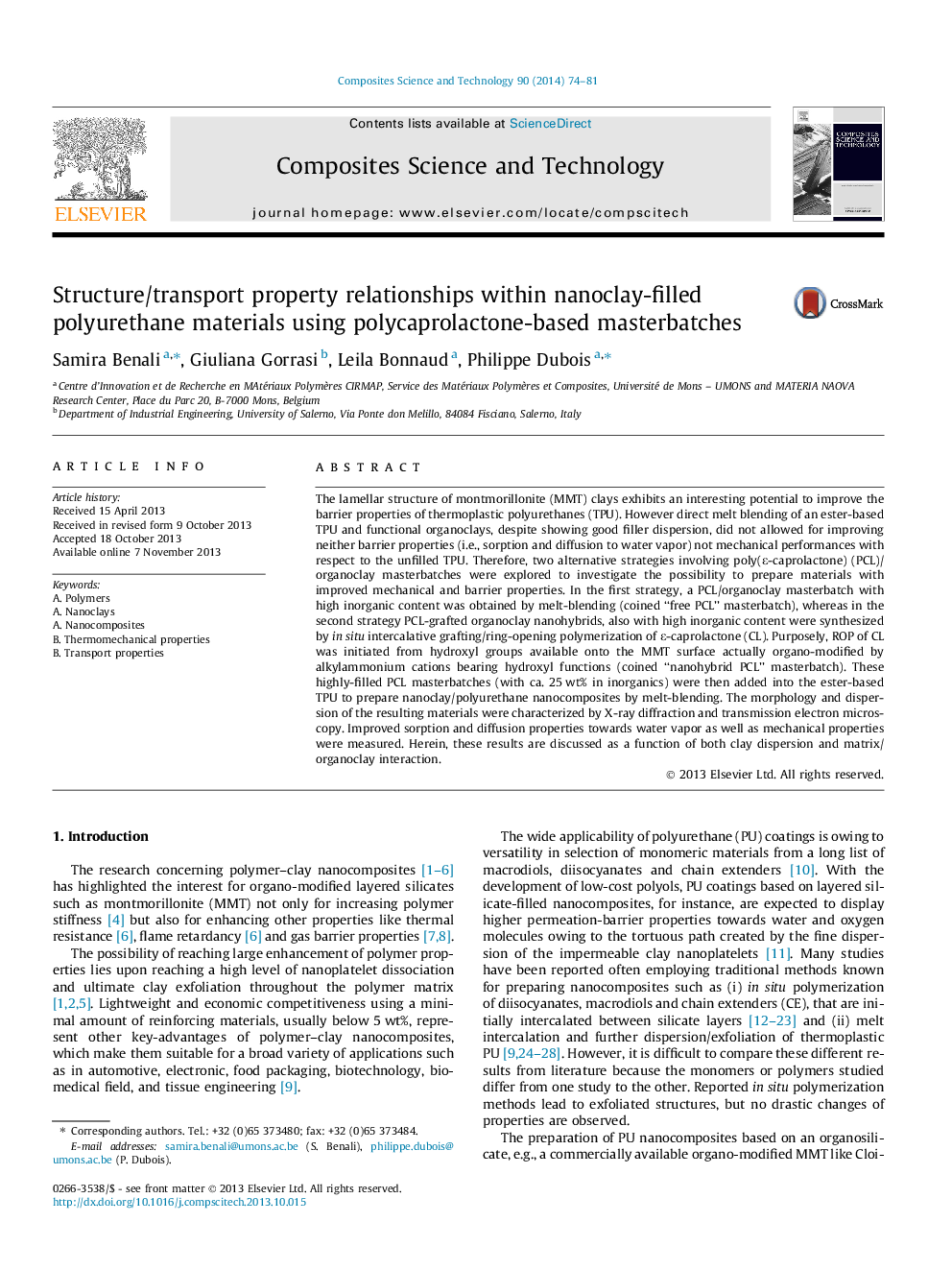| Article ID | Journal | Published Year | Pages | File Type |
|---|---|---|---|---|
| 7215820 | Composites Science and Technology | 2014 | 8 Pages |
Abstract
The lamellar structure of montmorillonite (MMT) clays exhibits an interesting potential to improve the barrier properties of thermoplastic polyurethanes (TPU). However direct melt blending of an ester-based TPU and functional organoclays, despite showing good filler dispersion, did not allowed for improving neither barrier properties (i.e., sorption and diffusion to water vapor) not mechanical performances with respect to the unfilled TPU. Therefore, two alternative strategies involving poly(ε-caprolactone) (PCL)/organoclay masterbatches were explored to investigate the possibility to prepare materials with improved mechanical and barrier properties. In the first strategy, a PCL/organoclay masterbatch with high inorganic content was obtained by melt-blending (coined “free PCL” masterbatch), whereas in the second strategy PCL-grafted organoclay nanohybrids, also with high inorganic content were synthesized by in situ intercalative grafting/ring-opening polymerization of ε-caprolactone (CL). Purposely, ROP of CL was initiated from hydroxyl groups available onto the MMT surface actually organo-modified by alkylammonium cations bearing hydroxyl functions (coined “nanohybrid PCL” masterbatch). These highly-filled PCL masterbatches (with ca. 25 wt% in inorganics) were then added into the ester-based TPU to prepare nanoclay/polyurethane nanocomposites by melt-blending. The morphology and dispersion of the resulting materials were characterized by X-ray diffraction and transmission electron microscopy. Improved sorption and diffusion properties towards water vapor as well as mechanical properties were measured. Herein, these results are discussed as a function of both clay dispersion and matrix/organoclay interaction.
Keywords
Related Topics
Physical Sciences and Engineering
Engineering
Engineering (General)
Authors
Samira Benali, Giuliana Gorrasi, Leila Bonnaud, Philippe Dubois,
